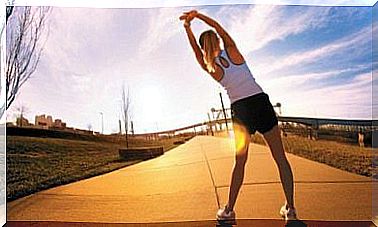Jogging And Running: What’s The Difference?

Running is a physical activity that provides many health benefits, as long as it is done correctly and in an ideal state of health. It is also a current trend. However, is everyone who runs a runner? And what about jogging? Is running and jogging the same?
The truth is that jogging and running are not the same thing. Both activities are similar; there is no doubt about it! Of course, in the end, running is running. However, the difference between these two disciplines means a lot, especially from a technical point of view, and for amateur athletes.
It is essential to know what we are doing to find the right information. To clarify this, we will see what jogging is, what running is, and what are the differences between jogging and running.
Jogging and running: What is jogging?
In a literal way, jogging means “trotting”. That is, running at a slow or temporarily stopped pace. It is therefore an exercise with great impact. Although it does not put stress on the joints, especially on the knees, it is much less than other sports.
To exercise jogging favors aerobic resistance and increases our physical capability without the drawbacks that more intense exercise can cause. This makes it perfect for recovery processes.
Also, jogging is highly recommended for people who want to do moderate to moderately intense aerobic exercise and cannot or will not exercise intensely.
The benefits of jogging
Jogging offers many health benefits for all ages, as long as your health status allows.
At this point, it is necessary to stop for a moment to remember that it is important to consult your doctor before performing any physical activity that may have a major impact or that may pose a risk. In this case, we are talking about injuries to the lower extremities or cardiovascular disease.
That said, the main benefits of jogging, according to various scientific studies, are the following:
- Prevents obesity and overweight.
- Improves heart function and cardiovascular health through improved oxygen absorption, elevation of good cholesterol or HDL, reduction of triglycerides and reduced blood pressure.
- Increases insulin sensitivity.
- Reduces platelet aggregation and increases fibrinolytic activity in addition to preventing pathological coagulation.
- Reduces markers of systemic inflammation.
- Improves psychological function.

What is running?
When we talk about running, we mean running as part of organized training that is subject to a plan with specific goals according to specific techniques. In other words, the practice sounds very professional.
Running involves a fairly powerful, intense aerobic workout where you run at a speed of up to 10 minutes per 1.6 kilometers. This means that it takes a maximum of 10 minutes to run 1.6 kilometers.
Benefits of running
The benefits of running are related to the intensity of the exercise. With this in mind, various studies have found that this physical activity:
- Helps bone, joint and cardiovascular health while increasing cardiorespiratory endurance.
- Strengthens muscles and increases the fiber tone in the core of the body.
- Helps maintain weight and promotes weight loss.
- Relieves stress.
To these benefits we must also add all those relating to jogging, as we have already mentioned above.
Jogging and running: What are the main differences?
The main difference between jogging and running is the speed or intensity of the exercise. As we have already mentioned, it is considered running when it takes a maximum of 10 minutes to cover 1.6 km.
Another of the most important differences between jogging and running has to do with the approach to exercise. People who jog go out jogging because they enjoy a period of aerobic exercise. However, runners follow a training plan with fixed goals and very clear guidelines.
This means a marked difference in technology, equipment, food and motivation. For example, runners usually choose shoes and clothes with great care. What they eat and drink before, during and after exercise is also very important.

You can jog or run, depending on your health
Although running is a popular sport right now, it is not for everyone. Whether or not your physical condition allows for this type of exercise, it requires good form and adequate cardiorespiratory capacity. You can of course train in all these areas.
Those who have never run before but who want to take advantage of the benefits of this exercise, can start with jogging and supplement this activity with other exercises. Over time, you may be able to take it a step further and become a runner.
At the same time, we must not forget the question of injuries. The more intense an exercise is, the greater the risk of injury. The same applies to unevenness in the terrain, potholes or unexpected slippery areas.
Now, one last recommendation: If you decide to run, do not do it without good shoes adapted to your foot and the way you move. Part of the first investment is a pair of good running shoes.









